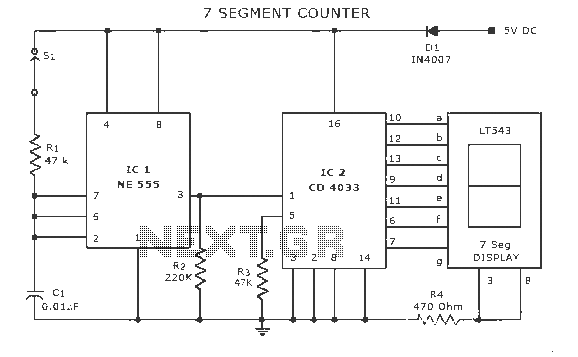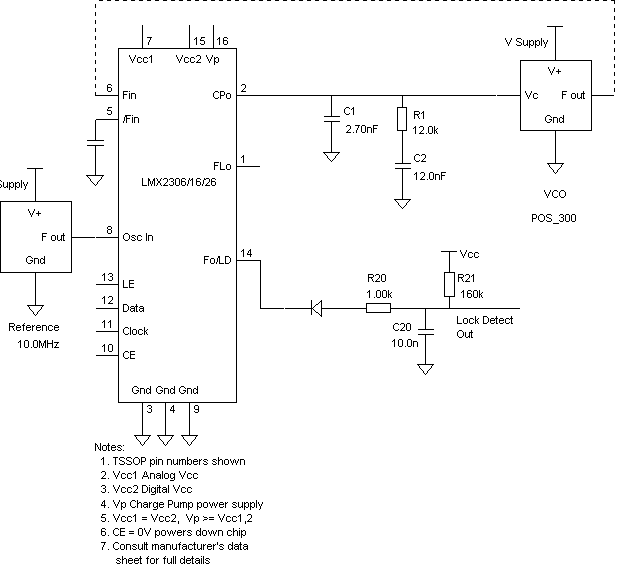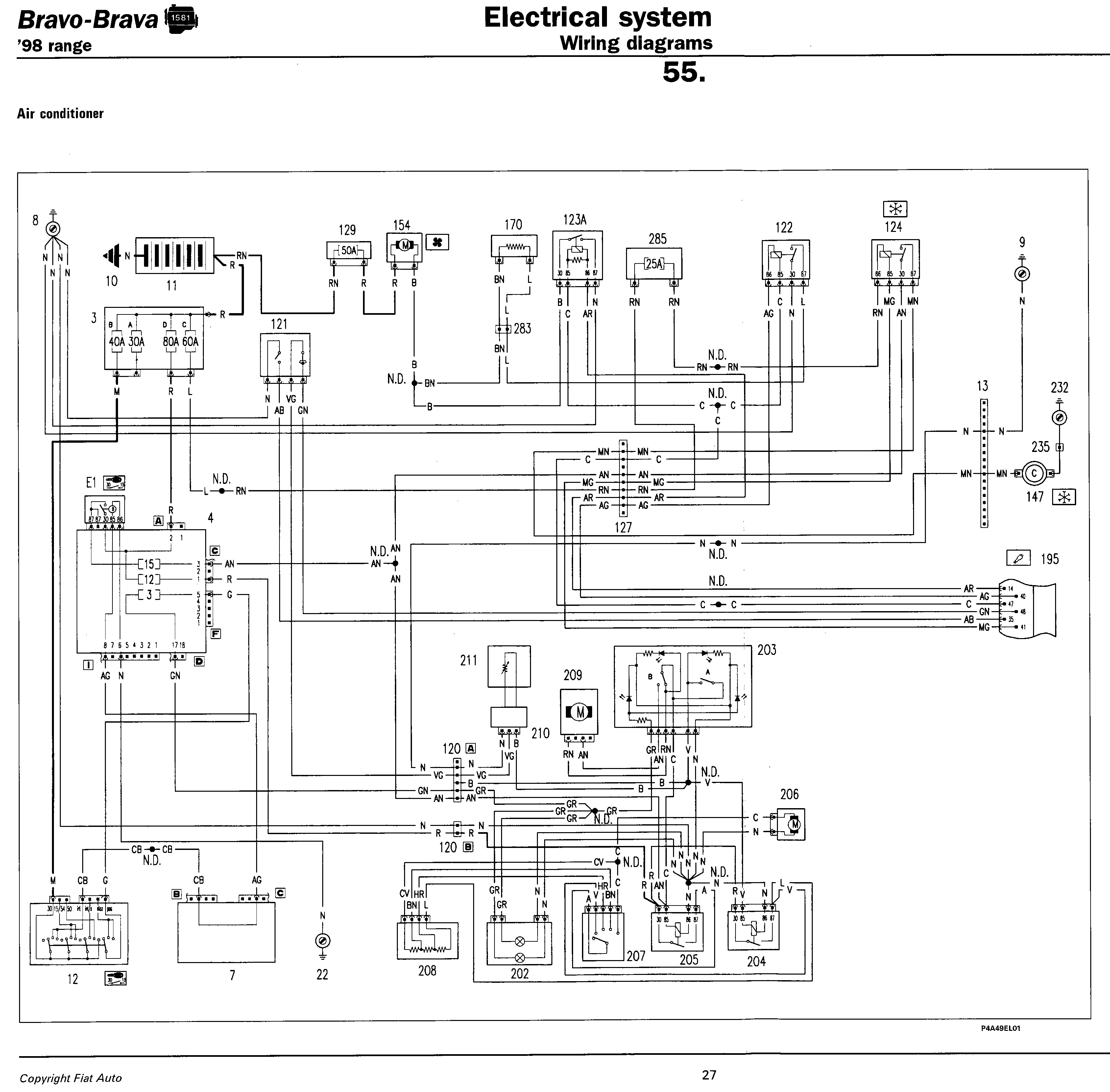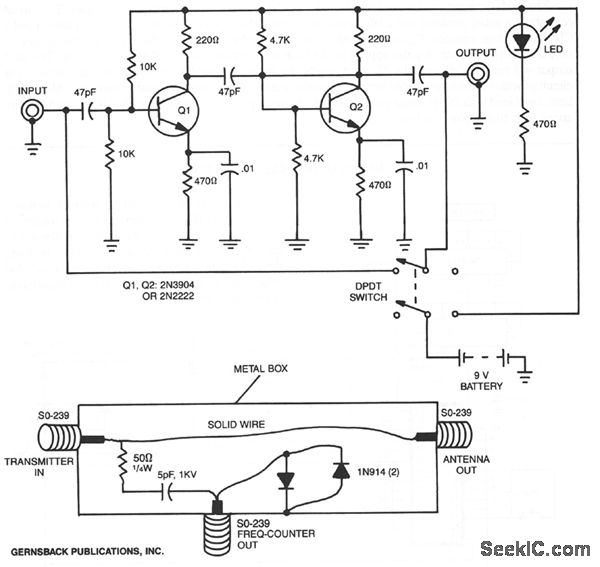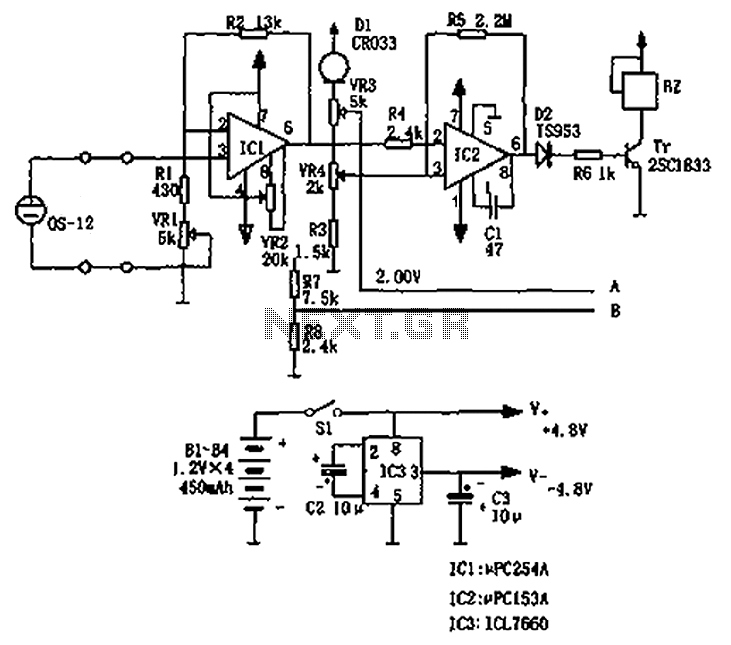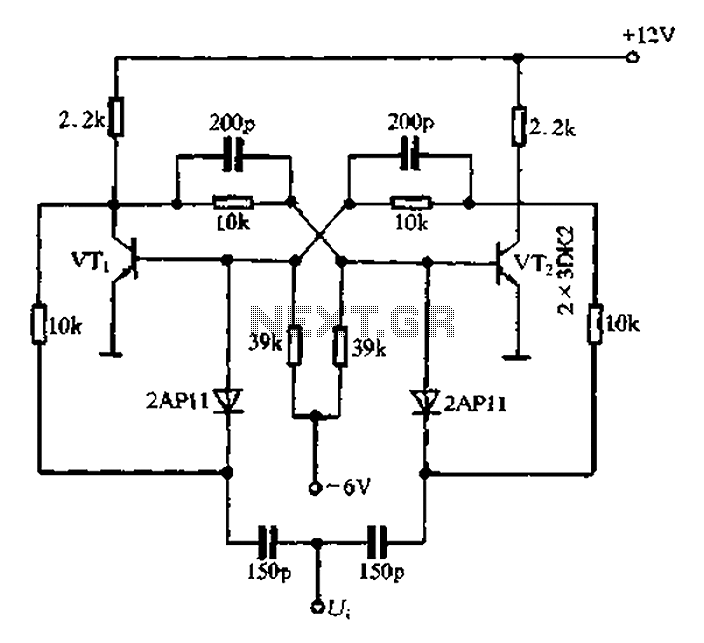
20 Khz ring counter
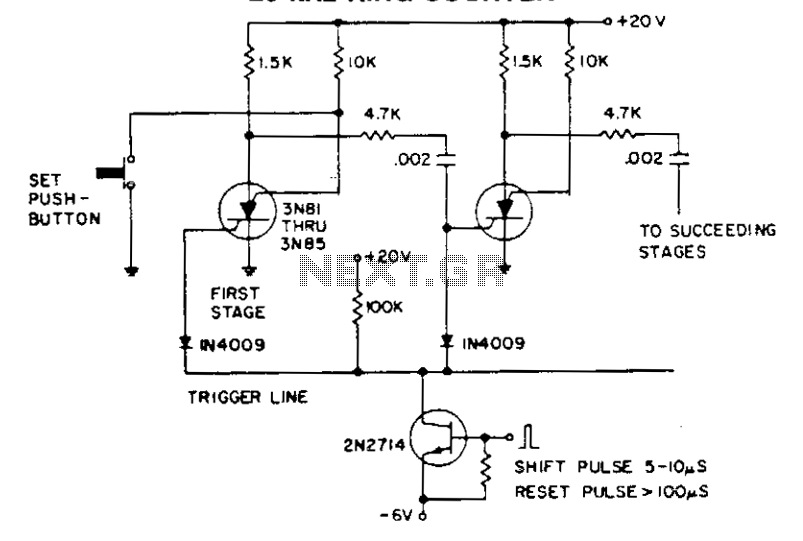
The shift pulse deactivates the conducting silicon-controlled switches (SCS) by reverse biasing the cathode gate. The charge accumulated in the coupling capacitor subsequently triggers the following stage. An excessively prolonged shift pulse charges all capacitors, resulting in the deactivation of all stages. Grounding an anode gate will "set" that stage.
In a circuit utilizing silicon-controlled switches (SCS), the operation relies heavily on the timing and duration of the shift pulse. The shift pulse serves a critical function in controlling the state of the SCS by applying a reverse bias to the cathode gate. This reverse bias effectively turns off the SCS, halting current conduction through that particular switch.
The coupling capacitor plays a pivotal role in this process. Once the shift pulse is applied and the SCS is turned off, the charge stored in the coupling capacitor is released, which then acts as a trigger for the next stage of the circuit. This sequential triggering is essential for maintaining the operation of multi-stage circuits, where each stage must be activated in a controlled manner.
However, care must be taken regarding the duration of the shift pulse. If the pulse is too long, it can lead to an overcharging of the coupling capacitor and other capacitors in the circuit. This condition can inadvertently deactivate all stages, leading to a complete shutdown of the circuit’s functionality.
Additionally, grounding the anode gate of an SCS serves to "set" that stage. This action effectively prepares the stage for operation, allowing it to respond appropriately to subsequent control signals. The grounding mechanism is crucial for establishing a reference point in the circuit, ensuring that the SCS can be reliably activated or deactivated as required.
In summary, the interplay between the shift pulse, coupling capacitor, and grounding of the anode gate is fundamental to the operation of circuits utilizing SCS. Understanding these components and their interactions is essential for designing robust and reliable electronic systems.The shift pulse turns off the conducting scs by reverse biasing the cathode gate. The charge stored on the coupling capacitor then triggers the next stage. An excessively long shift pulse charges up all the capacitors, turning off all stages. Grounding an anode gate will "set" that stage. 🔗 External reference
In a circuit utilizing silicon-controlled switches (SCS), the operation relies heavily on the timing and duration of the shift pulse. The shift pulse serves a critical function in controlling the state of the SCS by applying a reverse bias to the cathode gate. This reverse bias effectively turns off the SCS, halting current conduction through that particular switch.
The coupling capacitor plays a pivotal role in this process. Once the shift pulse is applied and the SCS is turned off, the charge stored in the coupling capacitor is released, which then acts as a trigger for the next stage of the circuit. This sequential triggering is essential for maintaining the operation of multi-stage circuits, where each stage must be activated in a controlled manner.
However, care must be taken regarding the duration of the shift pulse. If the pulse is too long, it can lead to an overcharging of the coupling capacitor and other capacitors in the circuit. This condition can inadvertently deactivate all stages, leading to a complete shutdown of the circuit’s functionality.
Additionally, grounding the anode gate of an SCS serves to "set" that stage. This action effectively prepares the stage for operation, allowing it to respond appropriately to subsequent control signals. The grounding mechanism is crucial for establishing a reference point in the circuit, ensuring that the SCS can be reliably activated or deactivated as required.
In summary, the interplay between the shift pulse, coupling capacitor, and grounding of the anode gate is fundamental to the operation of circuits utilizing SCS. Understanding these components and their interactions is essential for designing robust and reliable electronic systems.The shift pulse turns off the conducting scs by reverse biasing the cathode gate. The charge stored on the coupling capacitor then triggers the next stage. An excessively long shift pulse charges up all the capacitors, turning off all stages. Grounding an anode gate will "set" that stage. 🔗 External reference
